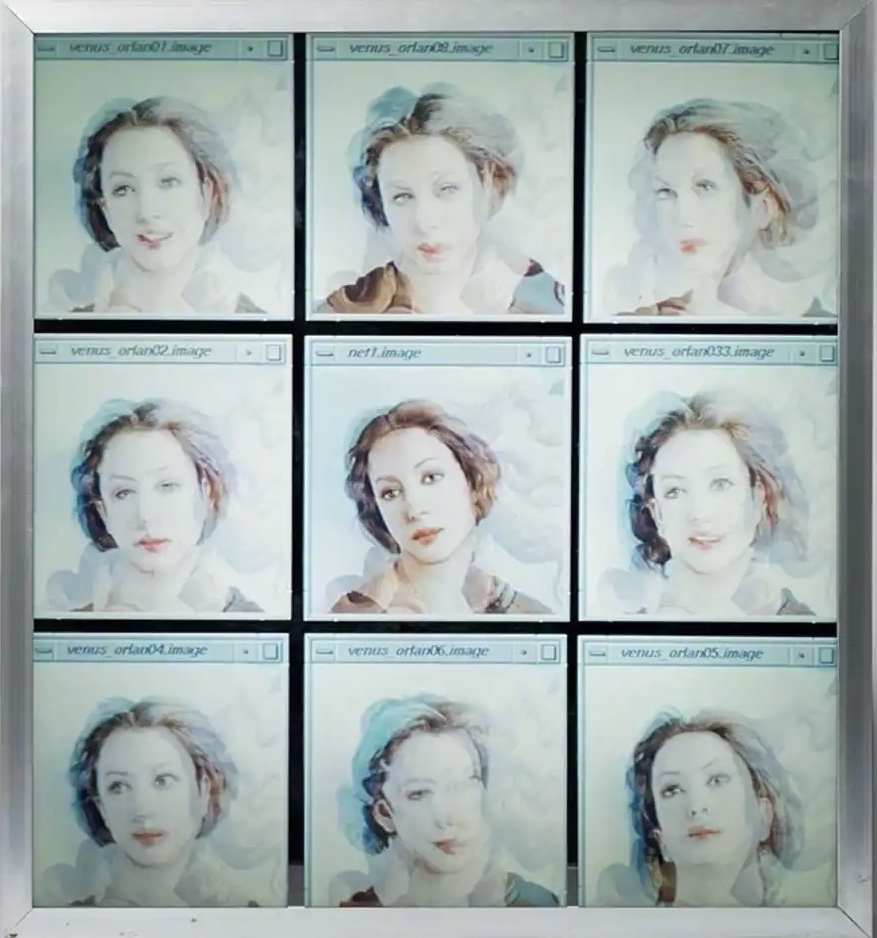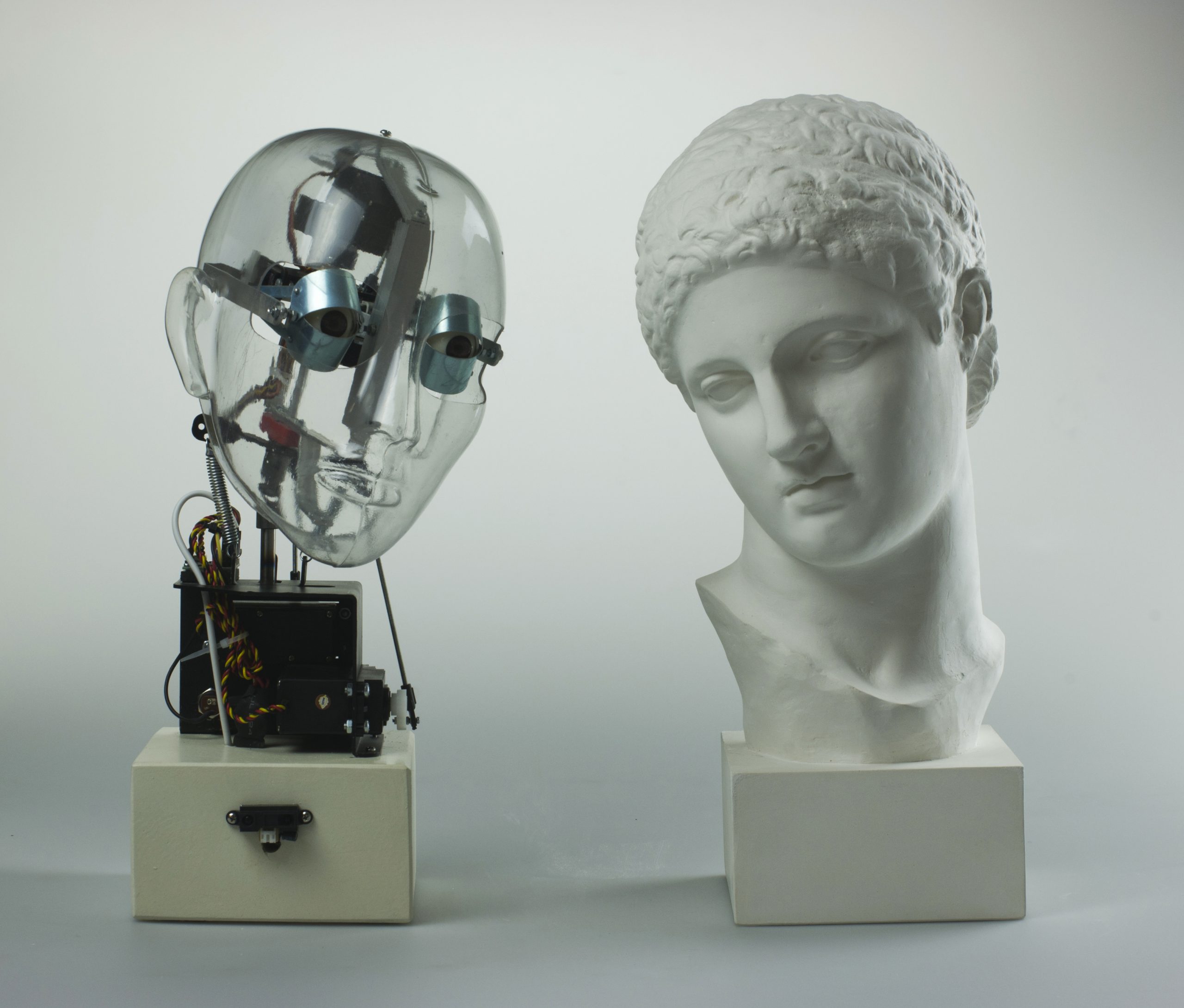THE HUMAN TOUCH

autore- Florencia Martinez , fotografia digitale e tessuto cucitura, cm 50 x 50 2022 THE ROAD NOT TAKEN 3.jpg

Karin Andersen & Christian Rainer, Interiors 3, Ed. of 5, Lambda Print, 40x30cm, 2006
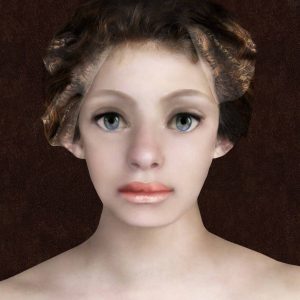
Milena Barberis 2016, ragazza dagli occhi azzurri 2 cm. 60×60. digital print jpg.jpg

Orlan – Entre Deux -Ibridazione Orlan Botticelli – 1997 boite luminosa 1/20 cm 49 x 53
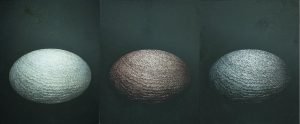
Rosaspina Buscarino- “Daedalus 1,2,3”, 2019 Fotog. olio, pigm. su tela cm100x240.jpg
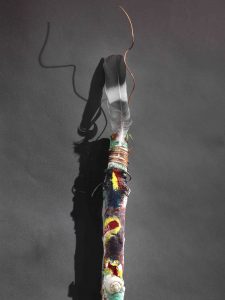
Vincenzo Torcello detail , installazione legno e pittura altezza cm 200 – 2021 “VIANDANTE” 17_1.jpg
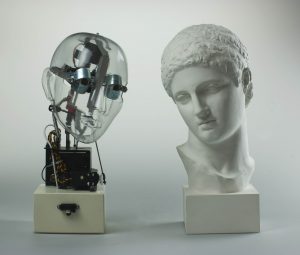
autore- Ale Guzzetti Affective Robot VS Naukides Discobolus, plastica, circuiti robotici e calco in gesso 46 x24 x 20 e 45 x 19 x13 2013 copia.jpg
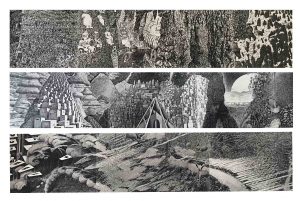
KENTARO CHIBA Life Scroll , detail – ink on paper 2019 .jpg
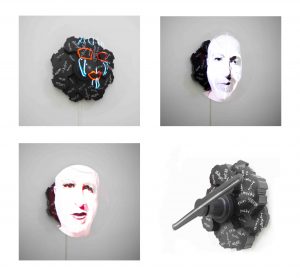
autore- Marcello Mazzella afrika. 2021. part. installazione jpg
THE HUMAN TOUCH
First exhibition for Stefania Carrozzini Gallery, which, thanks to the Milanese experience, as well as abroad, opens in Venice, on the Giudecca, taking over from the Galleria Sant’Eufemia with research and attention to emerging artists alongside others already institutionalized.
The exhibition “The Human Touch” presents nine Italian and international artists – Karin Andersen, Milena Barberis, Rosaspina Buscarino, Kentaro Chiba, Ale Guzzetti, Florencia Martinez, Marcello Mazzella, Orlan, Vincenzo Torcello – who, through videos, sculptures, installations multimedia, drawings on paper and digital photographs, investigate the concept of “feeling human” passing from robotics to the changing body, from more traditional forms of expression to interactive art.
Different approaches to the theme, almost an anthropological synthesis between phantasmagoric narratives of an imaginary human story, human beings “wayfarers” perennially in search of truth, and the body as a privileged seat for expressing transformation and prospects for becoming. A project that was born from the desire to bring to light reflections on our way of living the relationship with the artificial dimension, in every area and beyond any obscurantist temptation. Feeling respect for what is defined as “human” in the contemporary world, between openings and limits, in an attempt to ask questions about the fate of what makes us human and about the future of art that does not adapt to the mainstream and to the politically correct vision of too long dominant.
Art is a magnetic field with great potential for development, where it is possible to trace that unicum that makes us so different from other species. The opening to new sensory grammars and new worlds, between the uncertainty and ambiguity of the relationship between natural and artificial life, poses the problem of the limit and use of technology, hoping that this is a means and not an end.
The human touch is the emblem of identity because it synthesizes the relational experience with the ontological meaning of human nature. From a contemporary perspective we are witnessing a metamorphosis and a reversal of values. Trans-humanism offers a technical-scientific and technocratic vision that imagines the “how” we should improve. This perspective is supported by a superstitious belief in science as salvation (by axiom) and by an abstract contempt for our human nature: our frailty, our mortality, our sentience, our self-awareness, and our embodied sense of “Who” we are (distinct from “what” we are).
The technical apparatus aspires to reshape human nature as an appendix to production, from subject to object, but the human being is not made only to produce and consume. Transhumanism violates the identity of nature and its ontological specificities, trusting in an anthropological engineering that has in its program the negation of the limit and the commodification of being as its aim.
So many are the questions and doubts that this exhibition wants to ask. And again: will the increasingly pervasive digitization lead to a detachment from our basic needs, which distinguish us as human beings? We are witnessing an exponential growth of technological skills, but also cognitive, ethical, behavioral and relational, as well as emotional transformations. Where human activities can be replaced by technology, the essence of humanity must be found and preserved, its incredible ability to invent and adapt, its emotional intelligence. In this sense, it is the task of art to re-establish the dialogue between human beings and changing worlds in the making.
The Human Touch is a traveling project: the next stop will be in September 2022 in South Korea, Seoul (Naeil Gallery).
Concept by Stefania Carrozzini
Physical contact is a fundamental element of the human experience, as it constitutes an essential component of socio-emotional, cognitive, physical and neurological development since childhood. In fact, it contributes to determining the attachment style in infants and shapes emotional regulation throughout the life span. This experience was put to the test in the period of Covid, and we all suffered from it, but above all the weakest people.
The human touch is an important form of non-verbal communication, used to convey affection and closeness in times of difficulty. When it is limited, or even absent, the so-called “hunger for human touch” can develop, which has an impact on various aspects of our health, first of all leading to an increase in levels of stress, anxiety and depression. The world we live in where virtual reality is taking over more and more, it brings us back to our basic needs, as long as we have a body, we are subject to the laws of matter.
Will the increasingly pervasive digitalization lead to a detachment from our basic needs, which distinguish us as human beings? We are witnessing an exponential growth of technological skills, but also cognitive, ethical, behavioral and relational, as well as emotional transformations. Where human activities can be replaced by technology, the essence of humanity must be found and preserved, its incredible ability to invent and adapt, its emotional intelligence.
The archetype of the successful entrepreneur, Tim Cook, said: “I am an engineer, in love with rationality. But the most important decisions are rarely based on those criteria. The great defect of men is not to listen to their intuition “. What if we take back the most universal and effective process that exists to express our creativity, and our intuitions? We bring art and creation into our life and into the life of our businesses. It is what remains of specifically human in the digital age and artificial intelligence. The human touch is the emblem of human nature because it synthesizes the relational experience with the ontological meaning of human nature. From a contemporary perspective we are witnessing a metamorphosis and overturning of values. Transhumanism is a negative perspective on human nature, combined with a technical-scientific and technocratic vision that imagines the “how” we should improve. This perspective is supported by a superstitious belief in science as salvation (by axiom) and by an abstract contempt for our human nature: our frailty, our mortality, our sentience, our self-awareness, and our embodied sense of “Who” we are (distinct from “what” we are). The technical apparatus aspires to reshape human nature as an appendix to production, from subject to object because the human being is not made only to produce and consume. Transhumanism violates the identity of nature and its ontological specificities, relying on an anthropological engineering that has the negation of the limit in its program. And if human nature did not exist it would be possible to do anything, if human nature does not exist it is easier to commodify humans.
Canceling the idea of human nature can move actions even at the limit of the illegal, so as to create a new mental order where the idea of neutralizing the being is at the base.
Therefore the human being in the era of technical reproducibility becomes a machine, thinking of perfecting himself, but instead he denies himself, and mistakes this process as an achievement; here in the illusion of perfection, Pinocchio’s teaching is reversed. Human nature is offended, in the post-human desire to overcome the boundaries of nature and to be able to be whatever one wants. But we must defend the splendor of human nature, we must defend the reasons of Pinocchio rather than those of the Terminator. We have to stay human.

